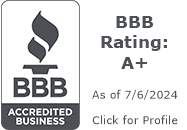Introduction
Starting May 5, 2025, the U.S. Department of Education will resume collections on defaulted federal student loans, ending a pause that began in March 2020 due to the COVID-19 pandemic. Approximately 5.3 million borrowers are currently in default, with projections indicating that this number could rise to 10 million in the coming months. AP NewsTime
Understanding Student Loan Default
A Federal student loan enters default when a borrower fails to make payments for 270 consecutive days. Defaulting on a student loan has severe consequences, including:
- Credit Score Impact: Default status is reported to credit bureaus, significantly lowering your credit score and affecting your ability to secure future loans or credit.
- Loss of Federal Benefits: Defaulted borrowers lose eligibility for additional Federal student aid and may be ineligible for deferment, forbearance, or alternative repayment plans.
- Collection Actions: The government can initiate wage garnishment, tax refund interception, and Social Security benefit offsets without a court order. AP News
What to Expect Starting May 5, 2025
With the resumption of collections:
- Wage Garnishment: The Department of Education can garnish up to 15% of your disposable income directly from your paycheck. LegalClarity
- Tax Refund Interception: Federal and state tax refunds may be seized to repay defaulted loans.
- Social Security Offsets: Up to 15% of Social Security benefits can be withheld for loan repayment. Higher Education Inquirer
- Credit Reporting: Delinquent and default statuses will be reported to credit bureaus, impacting credit scores.
Options to Avoid or Resolve Default
1. Loan Rehabilitation
Loan rehabilitation allows you to remove your loan from default by making nine consecutive, on-time monthly payments. The payment amount is based on your income and expenses. Upon successful completion:
- The default status is removed from your credit report.
- Wage garnishment and other collection activities cease.
Note: Loan rehabilitation is available only once per loan. AP News
2. Loan Consolidation
Consolidating your defaulted federal loans into a Direct Consolidation Loan can:
- Immediately bring your loan out of default.
- Allow you to choose an income-driven repayment plan.
- Prevent or stop wage garnishment and other collection actions.
Note: To consolidate a defaulted loan, you must either make three consecutive, voluntary, on-time, full monthly payments or agree to repay the new loan under an income-driven repayment plan. Bankrate
3. Income-Driven Repayment (IDR) Plans
IDR plans calculate your monthly payment based on your income and family size. Options include:
- Income-Based Repayment (IBR)
- Pay As You Earn (PAYE)
- Income-Contingent Repayment (ICR)
Note: The SAVE plan has been closed to new applications due to legal challenges, but existing enrollees remain in administrative forbearance. AP News
Steps to Take Immediately
- Check Your Loan Status: Log in to studentaid.gov to review your loan details and determine if you’re in default.
- Update Contact Information: Ensure your contact details are current to receive important communications from your loan servicer.
- Contact Your Loan Servicer: Discuss your options for rehabilitation, consolidation, or enrolling in an IDR plan.
- Beware of Scams: Only work with official loan servicers and the Department of Education. Be cautious of third-party companies that charge fees for services you can access for free.
How Kwik Mortgage Can Support Your Financial Recovery
Navigating federal loan default is stressful, especially when it’s combined with other financial commitments like a mortgage, family expenses, or long-term planning goals.
That’s where Kwik Mortgage steps in.
Refinance to Regain Financial Control
If you currently own a home, a cash-out refinance can:
- Help consolidate or reduce high-interest debt.
- Free up cash flow to cover federal repayment programs.
- Support emergency planning or future goals.
We’ll help you:
- Evaluate your equity and identify refinancing options.
- Structure a plan that aligns with income-based repayment timelines.
- Regain peace of mind — without sacrificing financial health.
Whether you’re recovering from default or planning your next financial move, we can help you build a path forward — not just as lenders, but as financial partners.
Schedule a free consultation with one of our licensed advisors and find out if refinancing can be part of your recovery solution.
Conclusion
With the resumption of student loan collections on May 5, 2025, it’s crucial to act promptly to avoid the severe consequences of default. By understanding your options and taking proactive steps, you can protect your financial future and regain control over your student loan debt.
Disclaimer:
This blog is for informational purposes only and should not be considered financial or legal advice. Please consult with your loan servicer, a financial advisor, or legal professional for personalized guidance regarding your individual student loan situation.






